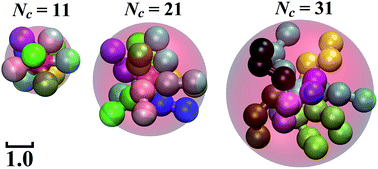Construction of dissipative particle dynamics models for complex fluids via the Mori–Zwanzig formulation
Abstract
We present a bottom-up coarse-graining procedure to construct mesoscopic force fields directly from microscopic dynamics. By grouping many bonded atoms in the molecular dynamics (MD) system into a single cluster, we compute both the conservative and non-conservative interactions between neighboring clusters. In particular, we perform MD simulations of polymer melts to provide microscopic trajectories for evaluating coarse-grained (CG) interactions. Subsequently, dissipative particle dynamics (DPD) is considered as the effective dynamics resulting from the Mori–Zwanzig (MZ) projection of the underlying atomistic dynamics. The forces between finite-size clusters have, in general, both radial and transverse components and hence we employ four different DPD models to account differently for such interactions. Quantitative comparisons between these DPD models indicate that the DPD models with MZ-guided force fields yield much better static and dynamics properties, which are consistent with the underlying MD system, compared to standard DPD with empirical formulae. When the rotational motion of the particle is properly taken into account, the entire velocity autocorrelation function of the MD system as well as the pair correlation function can be accurately reproduced by the MD-informed DPD model. Since this coarse-graining procedure is performed on an unconstrained MD system, our framework is general and can be used in other soft matter systems in which the clusters can be faithfully defined as CG particles.



 Please wait while we load your content...
Please wait while we load your content...